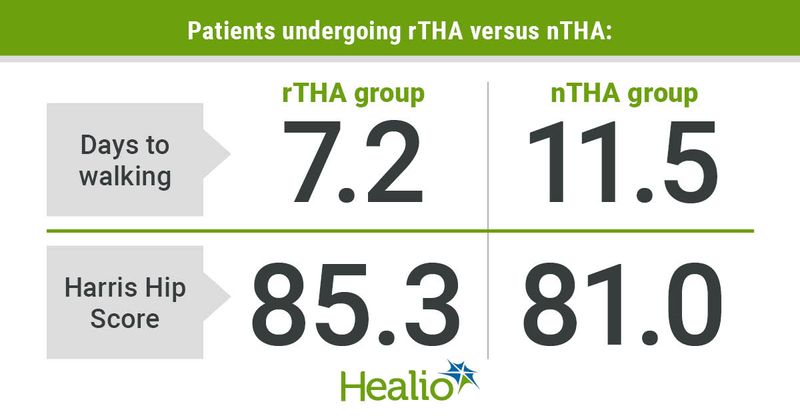Robotic-arm assisted THA yields improved outcomes, recovery vs computer-navigated THA
Compared with computer-navigated total hip arthroplasty, robotic-arm assisted THA yielded better outcomes and improved early clinical recovery, according to published results.
Researchers from the department of orthopedic surgery at Kobe Kaisei Hospital in Japan compared results of 30 prospective patients who underwent computer navigation system THA (nTHA) with 30 patients who underwent robotic-arm assisted THA (rTHA). Outcomes measures included surgical time, intraoperative blood loss, pain severity, days to independent walking and Harris hip score (HHS) at discharge, according to the study.

Patients who underwent rTHA demonstrated improved outcomes across all measures and faster recoveries compared with the nTHA group, the researchers noted.
The rTHA group had a mean surgical time of 135.1 minutes compared with 146.2 minutes in the nTHA group. The rTHA group had 548.5 mL of intraoperative blood loss compared with 568.7 mL in the nTHA group. It took the rTHA group 7.2 days to return to independent walking compared with 11.5 days in the nTHA group. Additionally, the rTHA group had a mean postoperative HHS of 85.3 compared with 81 in the nTHA group, and the rTHA group recorded lower postoperative pain scores, overall.
“The surgical time, postoperative pain and number of days to independent walking were significantly shorter, and the HHS at discharge was significantly higher in the rTHA group than in the nTHA group,” the researchers wrote in the study. “These results suggest that rTHA is beneficial to postoperative early clinical recovery compared to nTHA,” they concluded.
